Every Italian has grown up eating cutlets. Whether it’s chicken or veal is no matter. They were just always there, in bulk, waiting in the freezer to be cooked up at a moment’s notice. Veal is the traditional meat to use, but you need to be able to get your hands on really good veal, which is either hard to find or expensive. That’s why chicken is a perfect substitute, and in my opinion, tastier.
I have memories of my Mum and Nonna standing at their kitchen bench, slicing the meat thin, pounding it even thinner, then crumbing kilos and kilos of cutlets at a time. They would lay them in-between greaseproof paper and stack them into large Tupperware containers ready to be stored in the freezer. It was the one thing that was always there if someone turned up, no matter how many mouths needed to be fed. Even before we had microwaves, those cutlets defrosted in no time because they were so thin. Then a quick shallow fry in olive oil, and dinner is done. I can remember platters full of cutlets, piled on top of each other, eaten lukewarm. Nonna could never keep up with them, they disappeared off those platters real quick when the family was over. They were always there at every birthday, Christmas, Christening, Engagement Party, even a funeral. Cutlets are as much of my childhood as a big pot of tomato sugo, and to this day, I am never without a big box of frozen cutlets ready to go. So integral to my family are these cutlets that whenever my son flies home from uni, he leaves with 5kg of frozen chicken cutlets in his hand luggage to keep him going until the next time I see him.
So what makes them so good? Aren’t they just chicken schnitzel? Well, no. First of all, they are thinner, much thinner. This is why they are so moreish, just enough tender meat on the inside of a golden breadcrumb crust. But it’s the crust that makes cutlets special. A mixture of breadcrumbs, parmesan cheese, oregano and parsley adds a salty, herby flavour that makes these quite addictive.
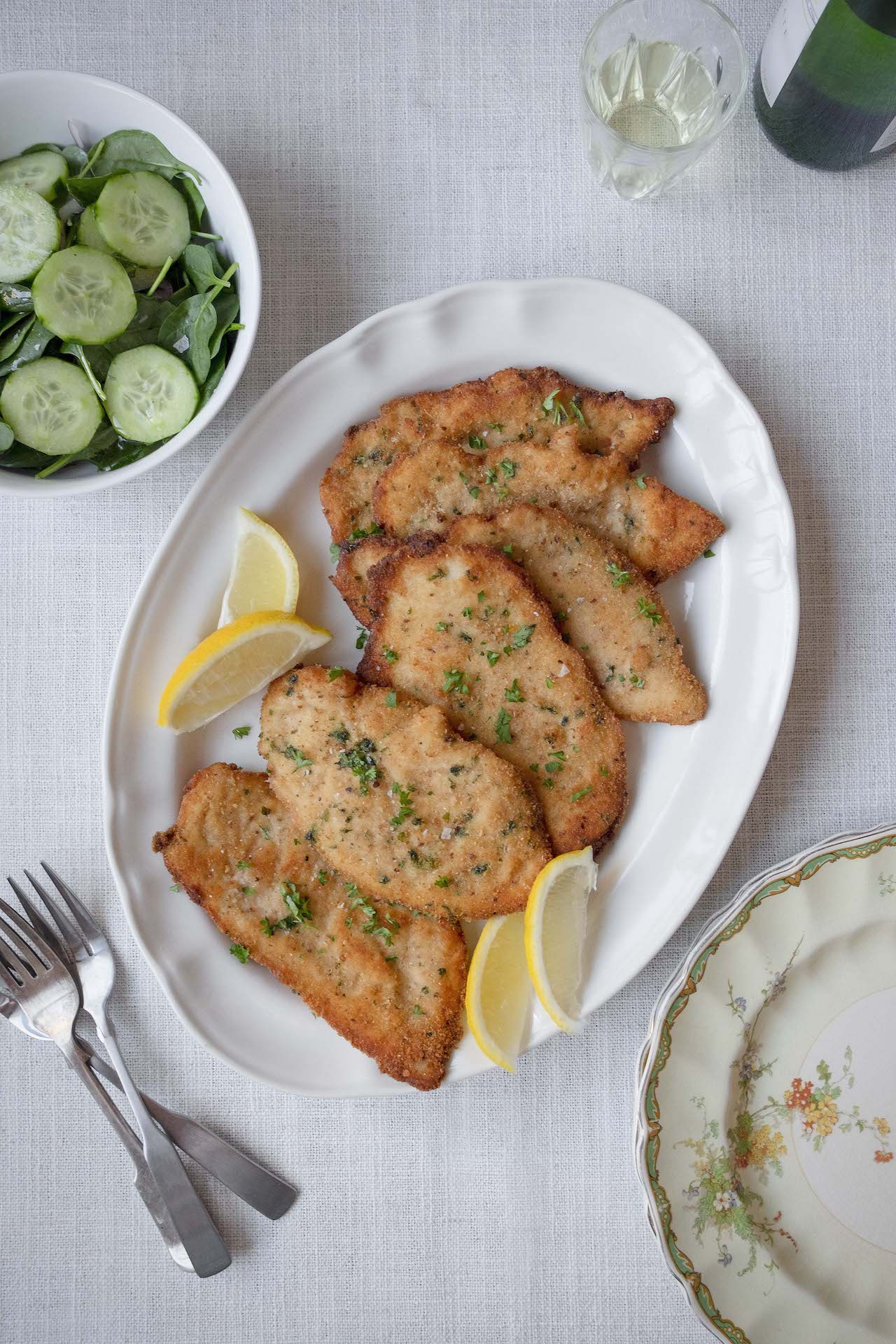
So delicious just as they are, but the great thing about a cutlet is the many things you can do with them. Once fried, add a little tomato sauce and grated cheese and place under a grill. Chicken Parmigiana! Or top with tomato sauce, sliced olives, roasted capsicum, dried oregano and grated cheese – whack under the grill and you’ve got Chicken Pizzaiola. I have also topped them with grilled slices of eggplant, tomato sauce and cheese for an Eggplant Parmigiana style chicken (all delicious alongside a simple plate of spaghetti or crispy green salad). I even use the same method to crumb fish!
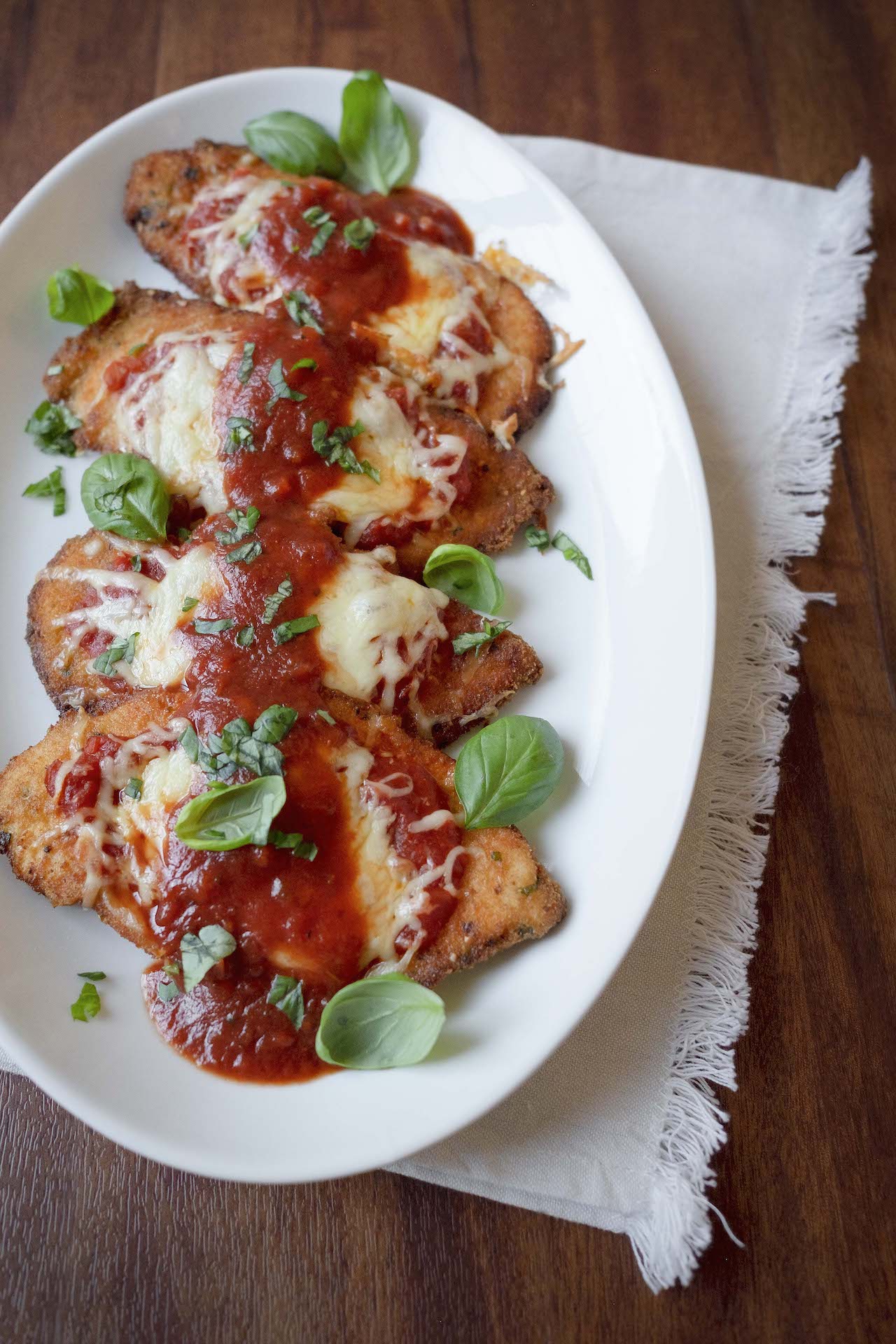
Try slicing cooked cutlets and adding to a Caesar Salad, or over a creamy coleslaw. Stuff into fresh bread rolls with crisp lettuce and lemon juice for a delicious sandwich, or add a little sauce and cheese, place under the grill for a Chicken Parmigiana Sandwich. Something I like to do for an appetiser is to cook small pieces of cutlet (just slice them smaller) and top them with chopped cherry tomatoes that have been tossed with fresh basil, garlic, olive oil and salt – kind of a Chicken Tomato Bruschetta without the bread.
The golden rule is, ALWAYS cook more cutlets than you think you need because a) people will always eat more than you think, b) they are equally good cold out of the fridge for snacks and c) leftovers make great lunches (awesome sandwiches) the next day. To this day my kids still fight over any leftover cutlets in the fridge (and I need to tell my husband to ‘leave them for the kids’ or they’d be gone for breakfast).
I’ve written the recipe for chicken cutlets in three of my four cookbooks (I would have added it to my third cookbook, but it was all about sweet things – and as much as I’d get up and eat a cold chicken cutlet out of the fridge for dessert, it really didn’t fit) because I know once you make them like my family has been making them for as long as I can remember, they will become one of your family legacies too. If you really want to cook like an Italian, it’s these kinds of recipes that makes you realise exactly what that means. Preparing food in advance. Stockpiling food. Making from scratch. Simplicity. That satisfying feeling that no matter what life throws you, you’ve got a stash of something delicious ready to go – and it’s all home made!
Before we get on with the recipe I want to talk about the crumb mixture. The crumb is what makes these cutlets taste so good. It may seem daunting to mix up a batch every time you want to make them, so do what every Italian does and make a large batch of crumb and freeze it. That’s right. Throw it all into a large sealed container, then when it’s time to crumb, just pour out as much as you need. This is the secret to Italian cooking, why make a little when you can make more? That crumb mixture is worth its weight in gold, and can be used not only for crumbing cutlets. I use it to crumb Arancini, Stuffed Chicken Breasts, as a filling for Stuffed Mushrooms, in my Meatball mixture (and any other mixture that requires breadcrumbs), I’ll add it to a pan with a little olive oil and toast it and sprinkle over cooked spinach, broccoli, or an oil slicked pasta. It has infinite uses, and because you’ve gone to the trouble of adding the extra flavour to simple breadcrumbs, everything you make with it will taste that little bit better. Trust me.
OK, so this recipe is for 1kg of chicken. I NEVER make an amount this small and I hope you won’t either. However, I don’t want to overwhelm you, so make a small batch first up and then use the recipe as a blueprint and go from there. Don’t bother with fresh breadcrumbs – the super dry ones in the supermarket are perfect. The amounts of flour, egg and crumb will vary on how thinly you cut your meat. You may have some leftover, you may need more or less flour or egg – but this is Italian cooking my friend, go with your gut!
Chicken Cutlets
Ingredients
1 kg chicken breast
3 cups plain flour
5 eggs
1/2 cup water
3 cups dried breadcrumbs
1/2 cup Parmesan cheese, finely grated
1 tbsp dried oregano
small handful of fresh flat leaf parsley, finely chopped
1 tbsp salt
olive oil, for frying
Method
Cut the tenderloin off each chicken breast and then slice the breast into thin, no thicker than 1cm slices. The thinner they are, the more you’ll get out of each breast. There’s no rule here, make them as long as you like – I find it depends on the shape of the breast and mine are always different shapes. Just make sure the thickness is consistent.
Pound the slices with a meat mallet to flatten nice and thin. Set aside.
Put the flour into a bowl. In another bowl crack the eggs, add the water and whisk well to combine. In a third bowl ( and I like to use a wide shallow one here as it’s easiest to fit the slices in and pat the crumbs evenly) add the breadcrumbs, cheese, oregano, parsley and salt and toss to combine. (Tip – increase the quantities of the breadcrumb mixture and freeze what you don’t need for next time as mentioned above).
One at a time, dredge the chicken pieces into the flour, shaking off the excess, then into the egg wash, then finally into the crumb mixture. Toss to coat completely.
The cutlets can now be layered in single layers, trying not to overlap, in-between grease-proof paper in a sealed container and frozen for up to three months (my mother would say longer, but let’s be on the safe side!). When you want to cook them they should be easy enough to pull out frozen (that’s why it’s important to freeze in single layers), allow to defrost in the fridge, or use a microwave. Then proceed to cook as follows.
Pour enough olive oil to cover the bottom of a large fry-pan so that it reaches around 1cm up the sides. You don’t want to submerge the pieces in oil like deep-frying, Just enough to cook each side – the tops should not be covered in oil as you do. Turn on the heat to medium-high and give the oil a little time to heat up.
Cook the cutlets in batches until golden on both sides, turning every now and then. Keep an eye on the heat, the cutlets should have a gentle rolling bubble around them, but not aggressive frying, otherwise the crumb will burn before the chicken inside has cooked. Adjust heat accordingly.
Remove from the pan and drain on paper towels.
Serves around 6 (maybe more, maybe less, but they tend to disappear quickly)
Pic from my new book: The Godfather – The Corleone Family Cookbook
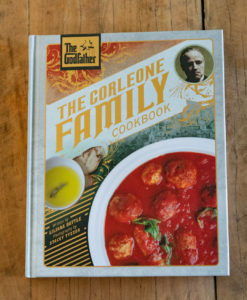
Photo Credit: Locket Photography

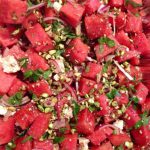
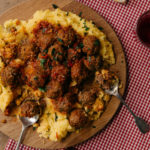
Leave a Reply